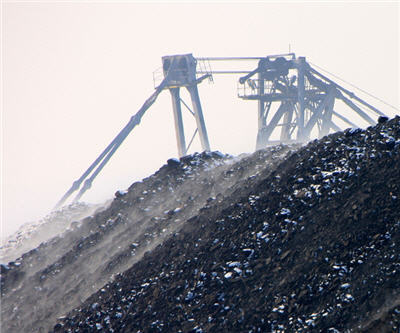IEA: Coal mining needs $735 billion investment through 2035

The International Energy Agency’s latest forecast of energy trends for the next 20 years predicts a significant fall in the share of fossil fuels in the global energy mix.
Even with widespread deployment of CCS technology, fossil fuels’ proportion of global energy is set to fall from the current 82% to 65% in 2035 according to the IEA’s most likely scenario.
However, at $19.2 trillion, total investment in gas, oil and coal still accounts for around half of total supply-side investment to meet global energy demand.
Annual capital expenditure on oil, gas and coal extraction, transportation and on oil refining has more than doubled in real terms since 2000 and surpassed $950 billion in 2013.
Investment in coal supply is much less expensive per equivalent unit of output than oil or gas; cumulative requirements in mining amount to $735 billion, with a further $300 billion in transportation infrastructure (mainly railways).
The $1 trillion investment needed does not include the actual mining operation nor the costs of transporting the coal, which typically account for a large share of the delivered cost of coal.
China accounts for around 40% of total capital expenditure on coal over the next 20 years the new report predicts.
The epicentre of increased oil and gas investment activity has been North America, with the rapid expansion of shale gas and tight oil output, but investment in other parts of the world has also been on an upward trend.
Annual investment in upstream oil and gas is predicted to rise to more than $850 billion by 2035, with gas accounting for most of the increase. More than 80% of the cumulative $17.5 trillion in upstream oil and gas spending is required to compensate for decline at existing oil and gas fields.
Around one-quarter of the total goes to producing unconventional resources, e.g. oil sands, tight oil, shale gas.
Gradual depletion of the most accessible reserves forces companies to move to develop more challenging fields; although offset in part by technology learning, this puts pressure on upstream costs and underpins an oil price that rises to reach $128/barrel in real terms by 2035.
Importers of fossil fuels rely for secure supply on the adequacy of investment in resource-rich countries; the investment needed to supply India and China with imported oil and gas over the period to 2035 is more than $2 trillion, a level that helps to explain the push by their national oil companies to secure investment opportunities abroad.
Meeting long-term oil demand growth depends increasingly on the Middle East, once the current rise in non-OPEC supply starts to run out of steam in the 2020s. Yet there is a risk that Middle East investment fails to pick up in time to avert a shortfall in supply, because of an uncertain investment climate in some countries and the priority often given to spending in other areas.
The result would be tighter and more volatile oil markets, with an average price almost $15/barrel higher in 2025.
High transportation costs for gas, compared with other fuels, are a constraint on the prospect of more globalised gas markets. More than $700 billion invested in LNG over the period to 2035 accelerates the integration of regional gas markets and has the potential to reduce current price differentials.
However, the high cost of many liquefaction projects and cost inflation could dampen the hopes of LNG buyers for more affordable supply. Europe’s near-term perspective for expanding LNG purchases is constrained by the need to outbid Asian consumers for available gas.
{{ commodity.name }}
{{ post.title }}
{{ post.date }}

Comments